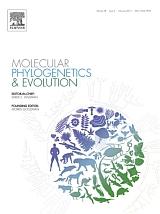




Related bibliographies:
Reptiles
 Lizards Lizards
 Lacertidae Lacertidae
Africa






































































































































































































































































































































| |

Bibliography of the genus
Heliobolus (Bushveld Lizards)

(Reptilia: Sauria: Lacertidae)
Note:
In order to limit redundancy, relevant literature indexed in the related bibliographies in the left column may not have been included in this page. For a comprehensive search of literature, these bibliographies should therefore also be consulted.
Heliobolus in general
 |
Bischoff, W. 1991. bersicht der Arten und Unterarten der Familie Lacertidae. 2. Die Gattungen Eremias, Gallotia, Gastropholis, Heliobolus, Holaspis und Ichnotropis. Die Eidechse 2(2): 14-21.
Dubke, M.; Hipsley, C.A.; M ller, J. 2018. Comparative skull osteology and preliminary systematic revision of the African lizard genus Heliobolus (Squamata: Lacertidae). African Journal of Herpetology 67(2): 160-197.
Haacke, W.D. 1997. Family Lacertidae genus Pedioplanis, genus Heliobolus and genus Meroles. pp. 52-54. In: Wyk, J.H. van (ed.). Proceedings of the FitzSimons Commemorative Symposium (South African lizards: 50 years of progress) and Third H.A.A. Symposium on African herpetology: held at the Transvaal Museum, Pretoria, South Africa, 11-15 October 1993. Herpetological Association of Africa, Matieland. 227 pp.
Mayer, W. 1989. Comments on Szczerbak's (1975) catalogue of the African sand lizards (Reptilia: Sauria: Eremiainae). Herpetozoa 1(3-4): 133-137.
Mayer, W.; Berger-Dell'Mour, H.A.E. 1988. Proteinelektrophoretische Untersuchungen zur Systematik der Gattungen Aporosaura, Meroles, Pedioplanis und Heliobolus (Sauria: Lacertidae) aus S dwest-Afrika. Herpetozoa 1(1-2): 23-29.
Szczerbak, N.N. 1975. [Catalog of African [and Middle Eastern] Desert Lizards]. (In Russian). Nauka Dymka, Kiev. 84 pp.
Szczerbak, N.N. 1989. Catalogue of the African sand lizards (Reptilia: Sauria: Eremiainae: Lampreremias, Pseuderemias, Taenieremias, Mesalina, Meroles). Herpetozoa 1(3-4): 119-132. (Translation of 1975 Russian original).
|
Heliobolus lugubris
 |
Boulenger, G.A. 1919. A un cas d'evolution a rebours chez un lezard africain (Eremias lugubris A. Smith). C. R. Soc. Biol. (Paris) 168: 78-80.
Brenes Rendon, J.M. 1999. Un caso sorprendente de mimetismo batesiano. Boletin de la Sea 25: 62.
Busack, S.D.; Maxson, L.R. 1987. Molecular relationships among Iberian, Moroccan, and South African lacertid lizards (Reptilia: Lacertidae). Amphibia-Reptilia 8(4): 383-392.
Castanzo, R.A.; Bauer, A.M. 1998. Comparative aspects of the ecology of Mabuya acutilabris (Squamata: Scincidae), a lacertid-like skink from arid south western Africa. Journal of African Zoology 112(2): 109-122.
FitzSimons, V.; Brain, C.K. 1958. A short account of the reptiles of the Kalahari Gemsbok National Park. Koedoe 1: 99-104.
Goldberg, S.R. 2006. Reproductive cycle of the bushveld lizard Heliobolus lugubris (Squamata: Lacertidae) from southern Africa. Salamandra 42(2-3): 151-154.
Hoesch, W. 1961. S dwestafrikanische Echsen in Freiheit und in Gefangenschaft. 2. DATZ (Die Aquarien- und Terrarien-Zeitschrift) 14: 307-309.
Huey, R.B.; Bennett, A.F.; John-Alder, H.; Nagy, K.A. 1984. Locomotor capacity and foraging behaviour of Kalahari lacertid lizards. Animal Behaviour 32(1): 41-50.
Huey, R.B.; Pianka, E.R. 1977. Natural selection for juvenile lizards mimicking noxious beetles. Science (New York) 195: 201-202.
McBrayer, L.D. 2004. The relationship between skull morphology, biting performance and foraging mode in Kalahari lacertid lizards. Zoological Journal of the Linnean Society 140(3): 403-416.
McBrayer, L.D.; Wylie, J.E. 2009. Concordance between locomotor morphology and foraging mode in lacertid lizards. Zoology (Jena) 112(5): 370-378.
Nagy, K.A.; Huey, R.B.; Bennett, A.F. 1984. Field energetics and foraging ecology of Kalahari lacertid lizards. Ecology (Washington, D.C.) 65(2): 588-596.
Odierna, G.; Capriglione, T.; Olmo, E.; Cardone, A.; Rosati, C. 1990. The karyology of some South African lacertids belonging to the genera Heliobolus, Merolles [Meroles] and Pedioplanis. Journal of African Zoology 104(6): 541-547.
Schmidt, A.; Gruschwitz, M. 1997. Mimikry zwischen W steneidechsen und W stenlaufk fern - eine berlebensstrategie in extremer Umwelt. Reptilia (D) 2(6): 22-24.
Schmidt, A.D. 1997. Phanotypische, ethologische und kologische Unterschiede zwischen juvenilen und adulten Heliobolus lugubris A. Smith 1838 und deren biologischer Hintergrund (Reptilia: Sauria: Lacertidae). Senckenbergiana Biologica 77(1): 1-13.
Schmidt, A.D. 1997. Zur Verbreitung, Biologie und kologie von Heliobolus lugubris A. Smith, 1838 (Sauria, Lacertidae) im s dlichen Afrika. Salamandra 33(4): 269-288.
Schmidt, A.D. 1997. Zur wachstumsbedingten Entwicklung von Farbung und Biometrie bei Heliobolus lugubris (A. Smith, 1838) (Sauria: Lacertidae). Sauria (Berlin) 19(2): 35-45.
|
Heliobolus neumanni
 |
Howell, K.M. 1982. Geographic distribution: Eremias cf. neumanni Tornier (Neumann's Sand Lizard). Herpetological Review 13(2): 52.
|
Heliobolus nitidus
 |
Ineich, I.; Chirio, L. 2008. Geographic distribution: Heliobolus nitidus nitidus (G nther's Desert Lacertid). Herpetological Review 39(1): 109.
Loveridge, A. 1937. Zoological results of the George Vanderbildt African expedition of 1934. 7. Reptiles and amphibians. Proceedings of the Academy of Natural Sciences of Philadelphia 89: 265-296.
R del, M.O.; Grabow, K.; Hallermann, J.; Bockheler, C. 1997. Die Echsen des Comoe-Nationalparks, Elfenbeink ste. Salamandra 33(4): 225-240.
|
Heliobolus spekii
 |
Goldberg, S.R. 2009. Reproduction in Speke's Sand Lizard, Heliobolus spekii (Squamata: Lacertidae) from Kenya. African Herp News 48: 2-4.
Harris, D.J.; Arnold, E.N.; Thomas, R.H. 1998. Rapid speciation, morphological evolution, and adaptation to extreme environments in South African Sand Lizards (Meroles) as revealed by mitochondrial gene sequences. Molecular Phylogenetics and Evolution 10(1): 37-48.
|
| | 














































































































































































|

